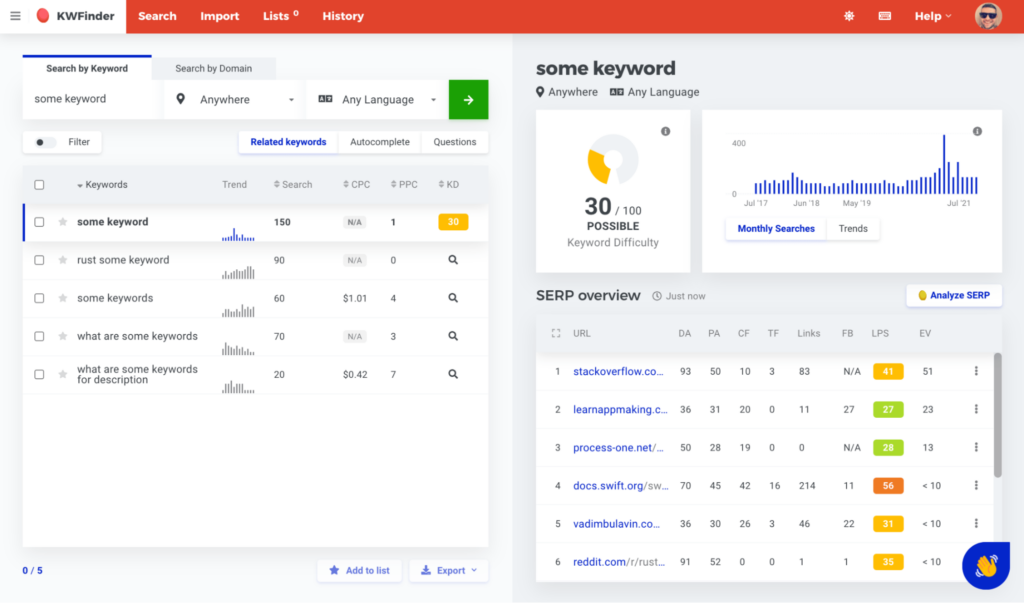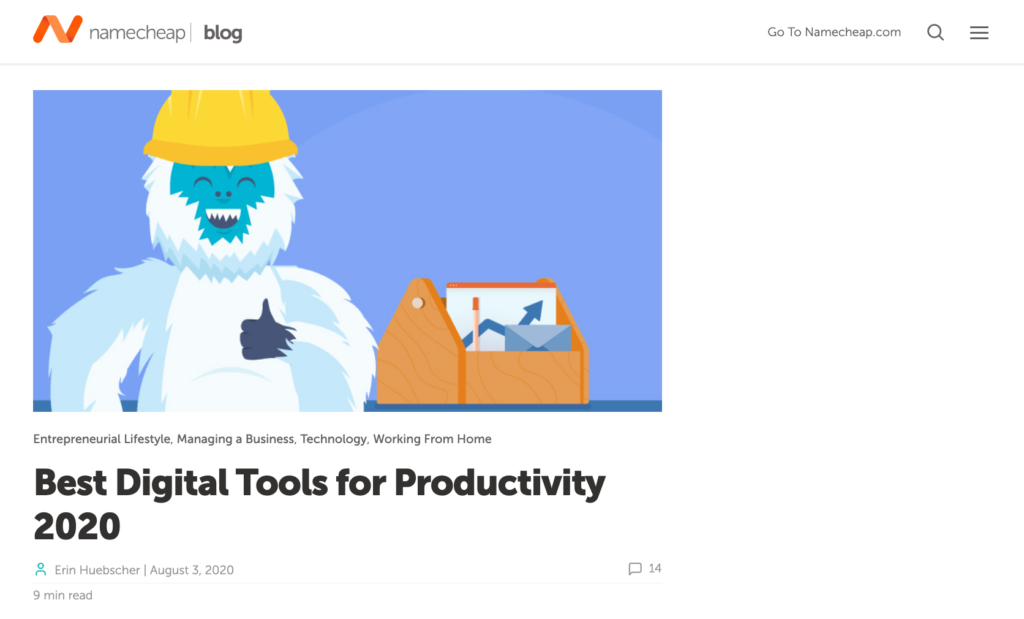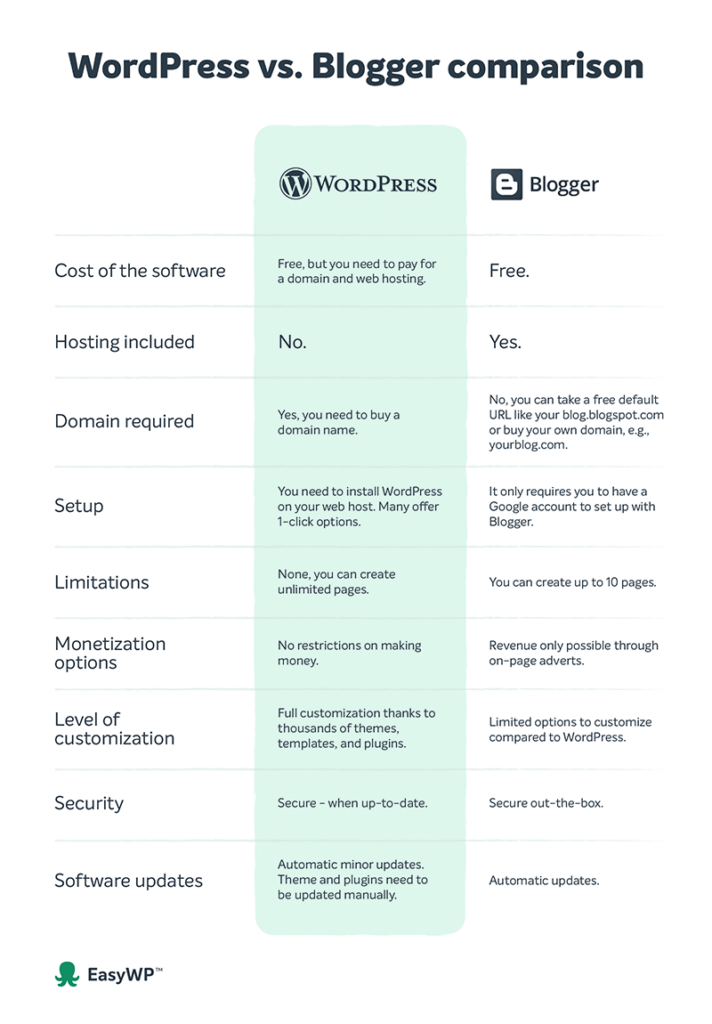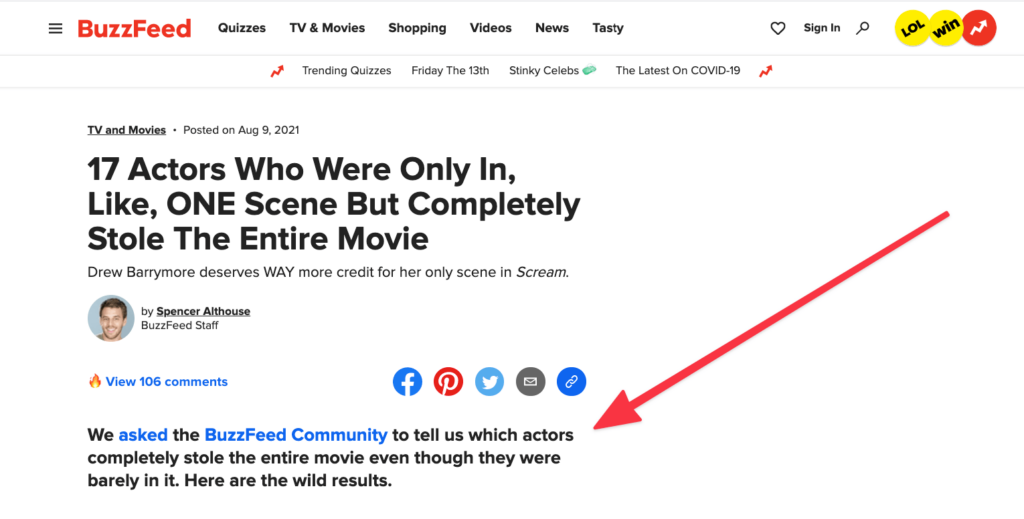10+ best types of content to earn you traffic and readers


Once you start dabbling into content marketing a bit more seriously, you’ll come across one major question: what are the best types of content you should create?
Or, to put it another way, what are the types of content that will bring you the most bang for your buck?
In this post, we demystify common types of content and show you which ones are worth your while, plus how to create them.
To make this all easier to digest, we’ve divided the list into a couple of categories based on how difficult and expensive each type of content is to prepare:
- Best types of content when you’re just getting started
- Keyword-based blog posts, Step-by-step tutorials, List posts, Product reviews, Interviews
- Best types of content to try next
- Infographics, Memes, Thought leadership/opinion posts
- Best types of content for advanced brands
- Video content, Podcasts, Research posts/case studies
Best types of content when you’re just getting started
1. Keyword-based blog posts
Keyword-based blog posts should be the go-to type of content for anyone just getting started with content marketing or blogging for their business.
The idea itself is simple enough:
- Identify the search terms (aka keywords) related to your niche that people use on Google.
- Look at the posts that already rank for these keywords.
- Write a WordPress post that’s similar but in some way better.
How to identify the best keywords? There are tools that can help you with this. The most popular free tool comes from Google itself. It’s called the Keyword Planner. For a more robust alternative, you can try KWFinder. It’s a paid tool, but it comes with a 10-day free trial. In case you’re not sure where to start, feel free to check out our guide on keyword research.

Try to come up with an angle to write a post that’s in some way better than what’s out there. Maybe you can write something that’s more in-depth, or longer, or more beginner-friendly.
This content type works because you already know that people are actively searching for this keyword and want to learn about it.
Keep in mind that even if your content is more about keywords and SEO, it should still be interesting and faultless. You have to avoid all grammatical mistakes, from small ones such as incorrect spelling to more complicated ones like getting prepositional phrases right. Your visitors will judge you on what they see in your content, so make a good impression.
Here are a couple of examples of search-based posts on our blog:
- Why are dedicated servers better for gaming?
- Best practices to secure your domains
- 6 essentials for a successful e-commerce site
2. Step-by-step tutorials
Tutorials are meant to take a topic or challenge and break it down into manageable chunks that the reader can understand and execute.
In a way, this makes tutorials similar to classic WordPress blog posts. The difference is in the depth of content and the potential to apply the advice from the tutorial immediately. A quality tutorial should take the reader all the way from blank to a concrete result.
Most commonly, tutorials will touch on the main challenges in your niche.
Here are some tutorial examples on EasyWP:
How to write a quality tutorial?
First, start with an idea. Identify some of the main pains or challenges in your niche. You can do that with good old keyword research or by checking out what gets talked about on forums or in Facebook groups. Essentially, every challenge that can be broken down into individual steps is a good topic for a tutorial.
When writing the tutorial, don’t omit any steps that seem straightforward to you but might not be to the reader — especially if the tutorial is meant for a beginner. Also, use good imagery or screenshots to illustrate the advice as you go along.
A quality tutorial can become an evergreen piece of content for you. You can potentially benefit from the tutorial for months if not years to come – provided that it stays relevant.

3. List posts
People love list posts! You’re reading one right now, after all. Although publishing a list of “top 10 somethings” does sound a bit too cliche to some website owners, lists have basically unparalleled appeal compared to other types of content.
Human brains are wired to categorize all things into groups (data), and we’re also very bad at resisting any knowledge gaps – we want to fill them right away. For instance, whenever you see a headline like, “Top 10 Ikea Items for the Modern Home Office,” it really is hard to resist clicking on it – even if you’re not in the market for Ikea at the moment. You just have to know regardless!

How to write a list post?
The magic of list posts is that nearly any topic can be presented in list form. Still, there are a couple of details you should keep in mind:
- The “top 10” is the king of lists. People enjoy round numbers.
- You should devote roughly the same number of words to each item on the list. Otherwise the list will be unbalanced and difficult to scan through.
- Start the list with the very best product/item/tool/idea or the most original one. Because list posts in WordPress are very popular, your readers have likely seen a number of them already. Starting with something original is a nice way to hook them.
4. Product reviews
Every niche has its set of common products that people buy. But before they’re ready to buy, they often want to learn if the product is actually good and if there’s perhaps a better alternative out there. Reviews provide them with that information.
And those don’t necessarily have to be products, per se. You can review books, software, websites, apps, actual physical equipment – basically anything that people in your niche buy.
How to write a good product review?
First, pick the right product. Going for the bestsellers in the niche is always a good idea, but you can also try with lesser-known products that you’re familiar with and want to show to your audience.
When writing the review, make sure to provide photos of the product (or screenshots if it’s a digital product), list its pros and cons, tell who the product is meant for and why they should buy it.
Here are some reviews of our own:
Best types of content to try next
5. Infographics
Although not as popular as they once were, infographics are still one of the content types with the most potential to go viral.
Infographics are easy to digest and they do a great job of presenting (sometimes complex) issues in a nice visual form. Apart from that, they’re also highly shareable – and not only by your readers but also by other brands and websites in the niche.
The only downside is that they can take time and money to create. If you don’t have the skills to put together an infographic yourself, you’ll have to either hire someone (on Fiverr, for example) or learn how to do a simple infographic in a tool like Canva.
Finding the right subject for your infographic is a process that needs plenty of time and research. You may want to begin by seeing what infographics your competition is using and what topics they are covering. After you have decided on a topic that looks the most interesting, you can then gather the necessary data and hire someone to create the infographic.

Here’s more on how to drive traffic to your site with infographics.
6. Memes
The internet loves memes! They reign on Facebook groups, in private messaging boards, on forums, and on social media in general.
Memes can also be used as an effective content type for business. You can use memes to grab your customer base’s attention in an unusual way. Companies like Netflix, Virgin Media, and others have used memes successfully to create a buzz about their upcoming products.
The great thing about memes is that they’re much easier to create than infographics. Design skills are not required and you also don’t need any specialized tools. There are meme generators online, which you can use to create memes in literally seconds – and for free.
That being said, memes don’t come without their own unique challenges:
- Memes don’t fit every brand. The more professional the field, the tougher it will be to use memes.
- While putting together a meme is simple from a technical point of view, nailing the humor is more challenging. Each meme has its own unique nature and structure. Not understanding what makes a given meme work will result in producing content that doesn’t click with the audience.
- The core graphics commonly used for memes might come with copyright uncertainty, especially if you need them for commercial use on your official business profiles.
7. Thought leadership/opinion posts
Writing an opinion post is a simple concept in itself. After all, we all have opinions, so it seems natural to share those opinions with the world.
However, it’s not a good idea to write this kind of content right from day one. This is why we’re only recommending opinion posts in the category of “types of content to try next.” The challenge with this content is that no one really cares about your opinions until you’re an established brand in the niche.
Aiming to be the industry’s thought leader is a great idea, and it can benefit you in the long run. However, before that can happen, you first must earn some authority, build a regular readership and establish a relationship with your readers. It’s only at that point that you can start creating thought leadership or opinion posts.
Before that happens, you’re better off focusing on the more low-hanging-fruit types of content, like lists or tutorials.
Best types of content for advanced brands
8. Interviews
Interviews can be a nice low-hanging fruit when it comes to the types of content you can publish on your site from day one. Plus, a good interview can boost your reputation in several ways.
First, there’s the obvious benefit of having an expert in your field featured on your site and sharing their knowledge. But apart from that, there’s a high likelihood that the expert will mention the interview on their social media profiles, thus contributing to your website’s growth.
How to write an interview?
First, pick the right expert. A neat way to do this is to research other websites in your niche and see who they interview. If an expert’s name keeps coming up on multiple sites, you know that (a) the expert is used to doing interviews and (b) people are interested in the expert’s opinions.
Next, prepare your questions. Check out those existing interviews and try coming up with questions that haven’t been asked yet, or take a question that did come up and dive deeper into it.
The interview itself can be conducted over email, so there’s no need to stress over having a Zoom call or anything.
9. Video content
These days, video is king when it comes to content online. Did you know that people consume, on average, 6 hours and 48 minutes of online video every week (data)?
Wondering how much they read for comparison? That’s only about 2.4-5 hours every week (data).
“So, great, let’s do video then!” – you’re thinking. A sound idea, but the main difficulty with video is that it takes much more time to do than any other type of content on this list.
Then, there are the costs. Cameras, lights, microphones, video editing software, they all cost money, and often in the thousands of dollars.
At the end of the day, videos are expensive and time-consuming to produce, but they’re also worth it when done correctly. If you have the budget and the time, go for it! You don’t necessarily need a professional videographer – a good online video editor can yield amazing results.
10. Podcasts
Podcasts are all the rage these days! You might have heard of some of the crazy acquisitions that happened in the podcasting space recently. Just to name one, The Joe Rogan Experience podcast was acquired by Spotify for an alleged $100 million in 2020.
Where did this amount come from? It’s simple – people love to listen to podcasts. And where there’s people’s attention, there are brands willing to spend top dollar to get a piece of that attention.
Creating a podcast is a lot cheaper than creating quality video content, but it’s still not without its difficulties and challenges.
First, the equipment. Unsurprisingly, audio quality is key in podcasting, so investing in good microphone(s) is a must. If you’re looking for budget options, everything by Blue Yeti will work out great. Their microphones start from $50 for the Snowball model.
Then, there’s the time investment required. Just to give you an idea, a 20-minute podcast episode is considered short. It’s not uncommon for podcasts to go even two hours long. This means that you first have to record the episode and then also spend at least double that in post-production.
11. Research posts/case studies
Research posts and case studies can be a great type of content for niches that are more professional in nature.
The more complex a given topic matter is, the more your readers will be interested in raw data and actual processes related to it. The main benefit is that the reader can learn from your experiences directly while also avoiding any of the common mistakes.
This is especially valid for case studies in which you share your entire experience with something – a product, a process, a strategy – from start to finish.
Here’s an example of a case study published on our blog:
The main difficulty with this type of content is that it takes time, effort, budget, and expertise to create.
Getting the data is the most time-consuming stage. If you’re doing a case study, you have to document every step of the process in detail along the way so that you can come back to them later when writing the case study post itself.
If you’re working on a research post based on third-party data, you’ll most likely need to hire researchers to get that data for you.
Alternatively, you can survey your readers and ask them a couple of questions about the topic that you want to create your research piece on. BuzzFeed often does just that:

However, this can all be worth it if you put enough effort into the execution. A quality research piece can remain an evergreen piece of content on your site for at least a couple of years. You can even make it a PDF that your audience can download and keep with them forever.
For example, this roundup of marketing statistics by HubSpot is the most popular such post in the industry. While HubSpot does update it every year, the bulk of the work was done when the post was first published.
12. Presentations
Presentations are like pure magic! They have the power to create mind-blowing experiences that totally mesmerize your audience. And guess what? You don’t need to be a wizard to make it happen! With visually appealing PowerPoint templates, you can whip up vibrant slides, stunning images, captivating videos, and animations that will leave everyone in awe. Combine all that with some compelling text, and you’ve got yourself a recipe for an unforgettable message that sticks in people’s minds. It’s like casting a spell of engagement and leaving a lasting impression that no one can resist!
Whether you’re an educator trying to ignite knowledge, a business professional aiming to leave a lasting impression, or a masterful storyteller yearning to captivate hearts, presentations offer the ultimate canvas for expression.
Did you know that presentations have been proven to enhance audience engagement and information retention? Studies show that incorporating visually compelling elements, animations, and multimedia integration in presentations can boost comprehension by up to 50% compared to traditional text-based formats.
You can adapt your presentations for different platforms by optimizing them for online viewing. This means considering file sizes, readability, and screen compatibility. Presentations engage audiences, convey information effectively, and create visually compelling experiences.
What’s next?
That’s it for our list of the best types of content you can use to grow your website, brand, and social media channels.
So, where to begin?
If you’re just starting out with a new brand, go for the types of content from the first section of this post. Things like keyword-based posts, lists, and tutorials literally always work – of course, when done correctly.
Then, you can transition into experimenting with more labor-intensive and expensive content projects like infographics, videos, podcasts, and so on.
👉 One thing we did not cover here is how to write headlines that grab attention. Headlines are incredibly important for making your content successful. We have a whole separate guide on that. Check it out.
What is your favorite type of content, and why? Feel free to share in the comments below.
